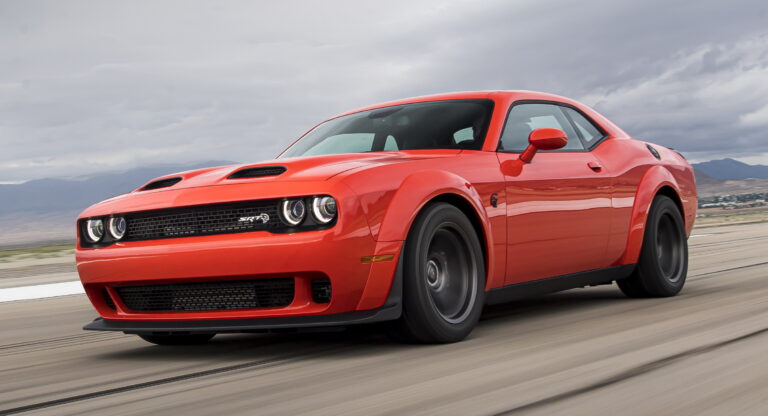Septic Tank Boom Trucks For Sale: Your Comprehensive Guide to Acquisition
Septic Tank Boom Trucks For Sale: Your Comprehensive Guide to Acquisition cars.truckstrend.com
In the critical world of waste management and sanitation, efficiency, safety, and reach are paramount. For professionals dealing with septic systems, municipal sewers, or industrial liquid waste, the septic tank boom truck stands out as an indispensable asset. More than just a simple vacuum truck, these specialized vehicles integrate a powerful vacuum system with an articulated boom, allowing operators to access hard-to-reach septic tanks, lift heavy manhole covers, and maneuver hoses with precision and reduced manual effort.
If you’re a business owner looking to expand your services, replace aging equipment, or even start a new venture in the lucrative field of liquid waste removal, understanding the intricacies of septic tank boom trucks for sale is crucial. This comprehensive guide will delve into everything you need to know, from their fundamental components to the practicalities of purchasing, maintenance, and operation, ensuring you make an informed decision that drives your business forward.
Septic Tank Boom Trucks For Sale: Your Comprehensive Guide to Acquisition
What is a Septic Tank Boom Truck?
At its core, a septic tank boom truck is a heavy-duty vehicle designed for the collection and transportation of liquid and semi-liquid waste. What differentiates it from a standard vacuum truck is the integrated hydraulic boom arm. This boom, typically mounted behind the cab, allows the operator to mechanically position the suction hose directly over the septic tank opening or manhole, often from a distance or over obstacles.
Key components typically include:
- Chassis: A robust truck chassis, often a commercial-grade heavy-duty model, providing the foundation.
- Vacuum Tank: A large, sealed tank (typically steel or aluminum) designed to hold the collected waste. Capacities vary widely.
- Vacuum Pump System: A powerful pump (rotary vane or liquid ring) that creates a vacuum inside the tank, drawing waste through the hose.
- Hydraulic Boom Arm: The defining feature, allowing precise, controlled positioning of the suction hose. It can extend, retract, and articulate, significantly reducing manual labor and improving safety.
- Control Panel: Located conveniently, often with remote capabilities, for operating the boom, vacuum pump, and other truck functions.
- Hose Reel: Stores the heavy suction hose, making deployment and retraction easier.

These trucks are vital for servicing residential and commercial septic systems, grease traps, car wash pits, catch basins, and various industrial applications where conventional vacuum trucks might struggle with access or heavy lifting.
Why Invest in a Septic Tank Boom Truck?

The decision to purchase a septic tank boom truck is a strategic one, offering numerous advantages for waste management businesses:
- Enhanced Efficiency: The boom drastically reduces setup time. Operators can quickly position the hose without manually dragging heavy hoses, especially across rough terrain or over fences. This means more jobs completed per day.
- Improved Safety: Lifting heavy manhole covers and maneuvering bulky hoses are common causes of back injuries and strains. The hydraulic boom eliminates much of this manual strain, reducing the risk of workplace accidents and worker’s compensation claims.
- Superior Access: The articulated arm allows access to septic tanks located in challenging spots – behind buildings, over retaining walls, or in areas with limited vehicle maneuverability. This expands your service capabilities and client base.
- Increased Productivity: Faster setup, safer operation, and better access directly translate into higher productivity and profitability for your business.
- Professional Image: Investing in specialized, modern equipment projects a professional and reliable image to your clients, helping you stand out from competitors.
- Versatility: While primarily for septic tanks, these trucks are also highly effective for pumping out car wash sumps, lift stations, grease traps, and various industrial clean-up operations.

Key Components and Features to Look For
When exploring septic tank boom trucks for sale, understanding the specifications and features is critical to matching the truck to your operational needs.
- Tank Capacity: Ranging from 1,000 gallons for smaller residential jobs to 6,000+ gallons for commercial or municipal contracts. Consider the average size of your jobs and the distance to disposal sites.
- Vacuum Pump Type and Power (CFM):
- Rotary Vane Pumps: Common, air-cooled, good for general septic and liquid waste. Measured in CFM (Cubic Feet per Minute), indicating suction power. Higher CFM means faster pumping.
- Liquid Ring Pumps: More powerful, quieter, and better for abrasive materials or continuous duty. Often found on larger, industrial units.
- Ensure the pump is appropriately sized for the tank and your typical waste viscosity.
- Boom System Specifications:
- Reach: How far the boom can extend horizontally.
- Articulation: The range of motion (degrees of rotation, lift, and tilt).
- Lift Capacity: How much weight the boom can lift (e.g., manhole covers).
- Remote Control: A highly desirable feature allowing operators to control the boom from a safe distance, often with improved visibility.
- Chassis and Engine:
- Gross Vehicle Weight Rating (GVWR): Ensure the chassis can safely carry the full weight of the tank and its contents.
- Engine Type & Horsepower: Diesel engines are standard for durability and fuel efficiency in heavy-duty applications. Horsepower should be sufficient for the truck’s loaded weight and any PTO (Power Take-Off) driven accessories.
- Transmission: Automatic transmissions are common for ease of operation, while manual might be preferred by some for specific control.
- Axle Configuration: Tandem axles for heavier loads, single for lighter.
- Safety Features: Emergency shut-offs, rollover protection, full tank alarms, work lights, backup cameras, and advanced braking systems are crucial.
- Accessory Options:
- High-Pressure Washdown System: For cleaning tanks, hoses, and work areas.
- Toolboxes and Storage: For hoses, nozzles, and tools.
- Heating/Insulation: For cold weather operation to prevent freezing.
- Liquid Level Indicators: For monitoring tank fullness.
New vs. Used: Making the Right Choice
The decision between a new and a used septic tank boom truck often comes down to budget, immediate needs, and long-term strategy.
New Septic Tank Boom Trucks
- Pros: Latest technology, full warranty, customizable to your exact specifications, no wear and tear, better fuel efficiency in newer models, lower initial maintenance costs.
- Cons: Significantly higher upfront cost, depreciation begins immediately.
Used Septic Tank Boom Trucks
- Pros: Much lower purchase price, slower depreciation, immediate availability, proven track record (if well-maintained).
- Cons: No warranty (or limited), potential for higher maintenance costs, older technology, potential for hidden issues, fewer customization options.
Tips for Buying Used:
- Thorough Inspection: Have a qualified mechanic inspect the engine, transmission, vacuum pump, hydraulic system, and boom structure.
- Tank Integrity: Check for rust, cracks, or leaks in the tank. Pressure test if possible.
- Maintenance Records: Request detailed service history to understand past repairs and upkeep.
- Pump Hours: Ask for the operating hours on the vacuum pump, as this indicates its remaining lifespan.
- Boom Operation: Test the boom’s full range of motion, checking for smooth operation, leaks in hydraulic lines, and signs of structural fatigue.
Understanding Pricing and Value
The price of a septic tank boom truck varies dramatically based on its age, condition, tank capacity, pump type, boom features, chassis manufacturer, and overall specifications.
Factors Influencing Cost:
- New vs. Used: New trucks can range from $150,000 to over $400,000+. Used trucks can be found from $30,000 for older, smaller models to $150,000+ for newer, low-hour units.
- Tank Size: Larger tanks mean higher prices.
- Pump Power: More powerful pumps increase cost.
- Boom Sophistication: Longer reach, more articulation, and remote control add to the price.
- Chassis Brand & Mileage/Hours: Premium brands and lower mileage/hours command higher prices.
- Features & Accessories: Washdown systems, advanced controls, and specialized toolboxes add to the total.
Table: Representative Septic Tank Boom Truck Price Ranges (Estimates)
| Category | Tank Capacity (Gallons) | Typical Boom Features | Condition | Estimated Price Range (USD) | Key Considerations |
|---|---|---|---|---|---|
| Entry-Level Used | 1,500 – 2,500 | Basic articulation, manual controls, shorter reach | Used | $30,000 – $70,000 | Older model, higher mileage/hours, potential for immediate repairs, good for startups |
| Mid-Range Used | 2,500 – 4,000 | Moderate reach, some articulation, possibly wired remote | Used | $70,000 – $150,000 | Good value, decent features, check maintenance records carefully |
| Premium Used / Newer | 3,500 – 5,000+ | Extended reach, full articulation, wireless remote, washdown | Used | $150,000 – $250,000+ | Excellent condition, low hours, modern features, close to new performance |
| New Standard | 3,000 – 4,000 | Standard boom, good pump, essential safety features | New | $200,000 – $350,000 | Full warranty, customizable, latest technology, high initial investment |
| New Large/Custom | 4,500 – 6,000+ | Advanced boom, high-power pump, premium chassis, all options | New | $350,000 – $500,000+ | Designed for heavy commercial/industrial use, maximum efficiency and features |
Disclaimer: These prices are estimates and can fluctuate significantly based on market demand, location, specific configurations, and economic conditions.
Where to Find Septic Tank Boom Trucks For Sale
- Specialized Dealerships: Many dealerships focus solely on vacuum trucks, septic trucks, and other waste management vehicles. They often offer both new and quality used units, financing, and service.
- Online Marketplaces:
- Heavy Equipment Marketplaces: Websites like CommercialTruckTrader.com, TruckPaper.com, MyLittleSalesman.com, and EquipmentTrader.com list a wide array of new and used commercial vehicles.
- Auction Sites: Ritchie Bros., IronPlanet, and other industrial auctioneers frequently have boom trucks for sale. Be prepared to buy "as is."
- Manufacturer Websites: Direct from manufacturers like Vac-Con, Super Products, or GapVax.
- Direct from Businesses: Sometimes, other waste management companies are selling off older equipment or downsizing. Networking within the industry can reveal these opportunities.
- Government/Municipal Auctions: Local or state governments occasionally auction off their surplus vehicles.
Financing Your Purchase
Unless you’re paying cash, financing is a key part of the acquisition process.
- Equipment Loans: Traditional bank loans or specialized equipment finance companies. These typically require a down payment and offer fixed monthly payments.
- Leasing: An option that allows you to use the truck for a set period with lower monthly payments, often with an option to buy at the end of the term. This can be beneficial for cash flow and tax purposes.
- Manufacturer Financing: Some manufacturers or their dealers offer competitive financing options.
Maintenance and Longevity
Proper maintenance is paramount to maximizing the lifespan and return on investment of your septic tank boom truck.
- Regular Oil Changes & Fluid Checks: For the truck’s engine, transmission, and hydraulic system.
- Vacuum Pump Maintenance: Follow manufacturer guidelines for oil changes, filter replacements, and seal inspections. This is often the most critical and expensive component to maintain.
- Boom System Inspection: Regularly check hydraulic lines for leaks, cylinder seals, pivot points for wear, and structural integrity for cracks or damage. Lubricate grease points.
- Tank Cleaning & Inspection: Regularly wash out the tank to prevent buildup and corrosion. Inspect the tank interior for signs of wear or damage.
- Hose & Nozzle Care: Inspect hoses for kinks, cracks, or blockages. Clean nozzles after each use.
- Chassis & Tire Maintenance: Standard truck maintenance applies – tire pressure, brakes, suspension, and overall chassis integrity.
- Winterization: If operating in cold climates, proper winterization procedures are essential to prevent freezing of water lines, pumps, and waste within the tank.
Regulatory Compliance
Operating a septic tank boom truck involves adherence to various regulations:
- Department of Transportation (DOT): For commercial vehicles, this includes driver qualifications (CDL usually required for air brakes and GVWR), vehicle inspections, hours of service, and hazardous material transport rules (if applicable).
- Environmental Regulations: Local, state, and federal regulations govern waste disposal, permitting, and potential spills.
- Local Licensing: Your municipality or county may require specific licenses or permits for operating a waste hauling business.
- Insurance: Comprehensive commercial vehicle insurance, including liability for spills and environmental damage, is non-negotiable.
Challenges and Solutions
While highly beneficial, operating a boom truck comes with its challenges:
- High Initial Cost:
- Solution: Explore financing, consider well-maintained used trucks, or start with a smaller model and upgrade later.
- Specialized Maintenance:
- Solution: Budget for professional maintenance, train staff on basic checks, and establish a preventative maintenance schedule.
- Operator Training: Operating a boom truck safely and efficiently requires skill.
- Solution: Invest in thorough training for your operators on boom controls, safety protocols, and proper waste handling.
- Disposal Site Access: Finding and securing reliable, permitted disposal sites can be an ongoing challenge.
- Solution: Research local regulations, establish relationships with wastewater treatment plants, and consider the travel distance to disposal in your pricing.
Conclusion
The septic tank boom truck is more than just a piece of equipment; it’s a strategic investment that can significantly enhance the capabilities, efficiency, and profitability of a liquid waste management business. By offering unparalleled access, improved safety, and boosted productivity, these specialized vehicles empower operators to tackle challenging jobs with confidence.
Whether you opt for a brand-new model with the latest technology or a carefully vetted used truck, a thorough understanding of features, maintenance, and operational considerations is paramount. By doing your homework, securing appropriate financing, and committing to regular upkeep, your septic tank boom truck will prove to be a hardworking asset, serving your clients and growing your business for years to come.
Frequently Asked Questions (FAQ) about Septic Tank Boom Trucks
Q1: What’s the typical lifespan of a septic tank boom truck?
A1: With proper maintenance, a well-built septic tank boom truck can last 15-20 years or more. The chassis might need replacement or major overhaul before the tank and boom system, which are often more durable. The vacuum pump typically has a shorter lifespan than the truck itself and may need rebuilding or replacement every 5-10 years depending on usage.
Q2: Do I need a special license to operate a septic tank boom truck?
A2: Yes, in most cases. If the truck’s Gross Vehicle Weight Rating (GVWR) is over 26,001 pounds, or if it has air brakes, a Commercial Driver’s License (CDL) will be required. Specific endorsements (like tanker endorsement) might also be necessary depending on your state and the nature of the waste transported. Always check your local Department of Motor Vehicles (DMV) or equivalent transportation authority for precise requirements.
Q3: How often should the septic tank on the truck be inspected?
A3: The waste tank itself should be regularly inspected for corrosion, cracks, or leaks, especially during routine maintenance. A thorough internal and external inspection is recommended at least annually. Pressure testing may be required periodically by some regulatory bodies or for certification.
Q4: Can I convert a regular truck into a septic tank boom truck?
A4: While technically possible to mount a tank and pump system onto a suitable chassis, adding a hydraulic boom system is a complex and highly specialized modification. It requires extensive engineering, structural reinforcement, and hydraulic system integration to ensure safety and proper operation. It’s generally not recommended for a DIY project and is best left to professional manufacturers and upfitters. Buying a purpose-built boom truck is safer, more reliable, and often more cost-effective in the long run.
Q5: What are the main operating costs for a septic tank boom truck?
A5: Key operating costs include:
- Fuel: Diesel consumption is significant due to the truck’s weight and PTO operation.
- Maintenance & Repairs: Regular servicing, oil changes, tire replacement, and potential repairs to the pump, boom, and chassis.
- Insurance: Comprehensive commercial vehicle and liability insurance.
- Disposal Fees: Costs associated with properly disposing of the collected waste at authorized facilities.
- Labor: Operator wages and benefits.
- Permits & Licenses: Annual fees for operating licenses and environmental permits.
Q6: What’s the difference between a "vacuum truck" and a "boom truck"?
A6: A "vacuum truck" is a broad term for any truck equipped with a vacuum system to suck up liquids or slurries. A "boom truck" is a type of vacuum truck that specifically features a hydraulic boom arm to position the suction hose. While all boom trucks are vacuum trucks, not all vacuum trucks have booms. The boom feature provides enhanced reach, safety, and efficiency for specific applications like septic tank pumping.





